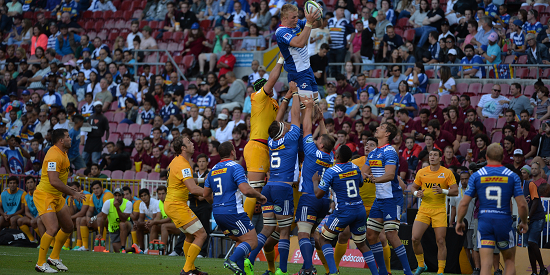 And it’s not what it’s going to be either, thanks to the restless, dynamic power of change. Just as the ball keeps bouncing, so does the trajectory of the game itself. But the fundamentals, as always, remain firmly in place. What will rugby look like in the years to come, and what will set the truly great teams apart from the rest?
And it’s not what it’s going to be either, thanks to the restless, dynamic power of change. Just as the ball keeps bouncing, so does the trajectory of the game itself. But the fundamentals, as always, remain firmly in place. What will rugby look like in the years to come, and what will set the truly great teams apart from the rest?
I really love how rugby has changed over the years. When I first started watching back as a small boy in the 1990s, the game was played with a brown leather ball. Skip passes and offloads weren’t exactly commonplace in those days, especially when it rained, so the game was naturally a little tighter and more conservative.
Today the ball is a beautifully advanced inflated rubber thing, with little studs for grip. One-handed off loads and daring passes to players in space are now common, so the game is faster and looser.
This is just the ball. Remember the boots? Rugby players back in the ‘when men were men’ era wore actual ‘boots’. Laced up past the ankles, they were made to last for many a game on muddy fields. With the flexibility of an old steak, running in them must have been like riding an ox wagon on a dirt road.
Looking at what the players are striding out in nowadays is space age in comparison. The fields are much better too. Actually, they are seldom called fields but rather ‘playing surfaces’. Forget ox wagon on a dirt road, it’s more like a super car on a race track.
Onto the various rule changes. Remember when the lineouts looked like a masculine version of a wedding bouquet toss? Nowadays the tall athletic locks are lifted gracefully into the air by muscular support players to secure the ball. Scrumhalves mostly get the ball presented to them on a silver platter, allowing reasonable time to unleash the backline.
Everything has changed to get players to score more tries and run the ball more. Even the score allocation for such an act. Originally the purpose of scoring a try was to provide you with a kick at the posts. Miss the kick, and you don’t get any points. Then the try became worth four points, and then five, to where we have it now. Further innovations could see that change to an even greater number.
The move from amateur to professional ranks changed the players’ physical appearance. Gone were the days of players having day jobs, then hitting practice after work, with a few beers after that. With the change in profession came the physical change in the player. Players are on average 15-20 kilograms heavier nowadays in their professional quests to be bigger, faster and stronger. If a team from the 1970s had to run onto a SuperRugby field this weekend against a current day side, they would probably run straight off again in fear.
But with all this change, there is something important that is the same as it has always been. As much as we love and cheer for the sexy running rugby, length of the field tries and skip passes and side steps, rugby is still a game that is won by a team with great pack of forwards, and an intelligent kicking game.
If you can’t scrum, you can’t win. If you can’t win your lineouts, you can’t win. If you can’t secure your ball in phase play, you can’t win. And if you can’t keep your team moving up field, you simply can’t win.
Sounds obvious, but the basics in rugby is still the most attractive commodity to any team. The New Zealanders prove this every season. They are seen as the ‘most daring running’ team, but they just do the basics incredibly well.
This wonderful game of rugby will continue to change. But no matter what happens, the best teams will still have the best forwards and the best kicking game.

Leave a Reply